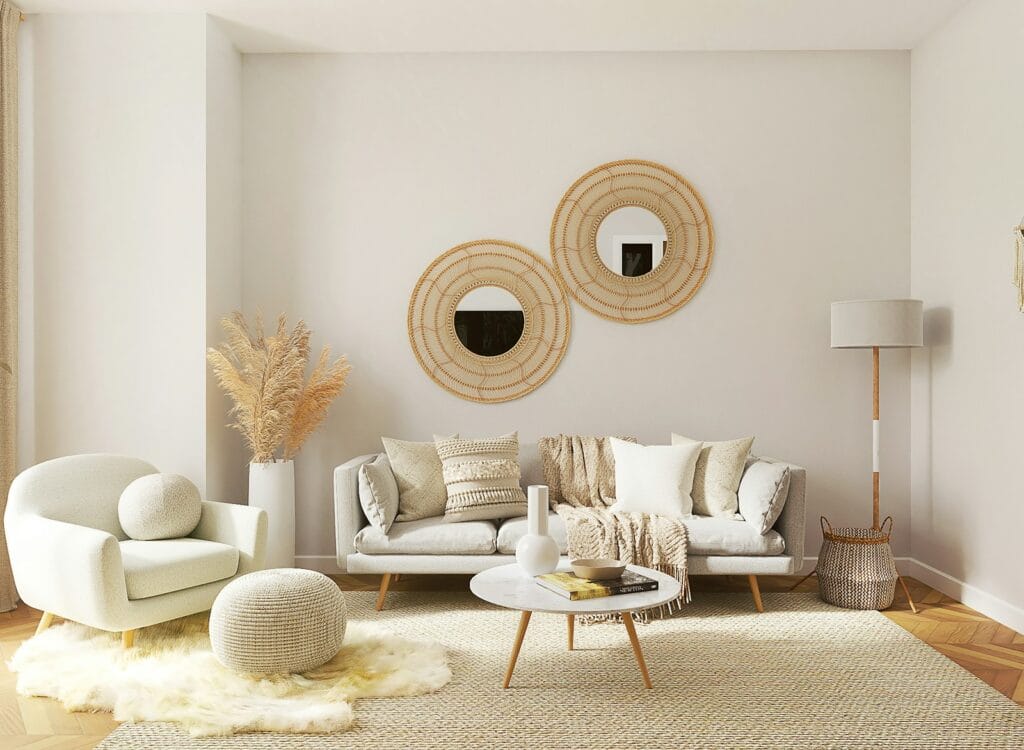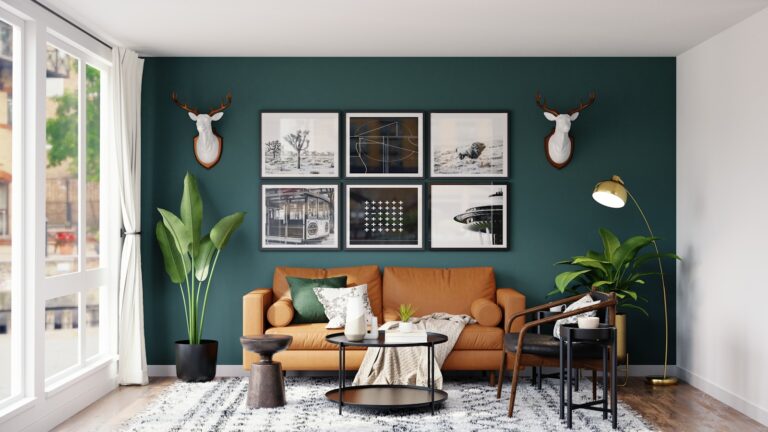Small living rooms can actually feel cozy and inviting if you know a few decorating tricks. The real secret is picking furniture that does double duty, sticking with lighter colors to open things up, and finding clever storage spots to keep clutter out of sight. Lots of people think you have to give up style for function in a tight space, but honestly, that’s just not true.
With a thoughtful approach to layout and design, you can turn a small living room into a spot that’s both comfy and stylish. It’s really about working with your room’s natural features instead of fighting them. Small living room decorating ideas are all about squeezing the most out of every square foot, while still keeping things feeling airy.
From getting the furniture size right to picking lighting that makes your space look bigger, small room decorating calls for some specific strategies. You’ll find ways to arrange layouts for better flow, pick storage that also gives you a place to sit, and use color and lighting to make the room seem larger than it really is.
Living Room Design Fundamentals
Small living rooms need smart design choices that help you save space without losing style or function. It’s about understanding your limits, picking a strong visual anchor, and using color in ways that make the room feel bigger.
Understanding Small Living Room Challenges
Small living rooms come with their own set of challenges, so planning matters more than ever. With less space, every decision counts.
Traffic flow gets tricky if furniture is in the way. You need clear paths between seats and doorways so it doesn’t feel cramped or awkward.
Storage is often tight, so you have to be picky about what stays. Every item should be useful or something you love. Hidden storage really helps keep things looking tidy.
Furniture that’s too big just swallows a small room. Getting the proportions right makes everything look balanced.
Common Small Living Room Problems:
- Furniture blocking natural light
- Too many decorations causing clutter
- Bad lighting making the room feel closed-off
- No clear zones for different activities
Choosing the Right Focal Point
Every small living room needs one main focal point to pull the design together. This keeps the space from feeling scattered.
If you’ve got a fireplace, big window, or built-in shelves, let that be your focal point. Arrange your main seating to face it.
If your room doesn’t have a natural feature, you can create one with bold art, an accent wall, or a standout piece of furniture. Pick something that feels like you.
TVs often end up as the focal point, but they can take over in a small space. Try wall-mounting them to save floor space.
Make sure your focal point fits the room. In a small space, giant art or furniture will just feel overwhelming. Pick something that stands out without taking over.
Selecting an Effective Color Palette
Color can totally change how big your living room feels. Lighter colors bounce more light around and make the space feel bigger.
Neutrals are your friend in small living rooms. Whites, creams, light grays, and beiges make a great base. They help the walls kind of fade back visually.
Effective Small Space Color Strategies:
- Stick to lighter shades for walls and big furniture
- Add dark colors with small things like pillows or accessories
- Keep ceilings lighter than walls to make the room feel taller
- Limit yourself to three or four main colors
Monochromatic color schemes (different shades of the same color) work really well in small spaces. They add depth without making things look busy.
Go easy on the accent colors. A couple of bold touches in pillows or art are enough to add personality without overpowering the room.
Optimal Layouts and Space Planning
Smart furniture placement and using vertical space can totally change even the trickiest small living rooms. Area rugs help break up the space and make every inch count.
Arranging Furniture for Awkward Layouts
Small living rooms often have weird shapes or features. It’s best to work with what you’ve got.
Narrow rooms do better with furniture along the walls. Try putting the sofa on the longest wall and angle a chair or two to make a little conversation spot.
L-shaped rooms can be split into two zones. Use one side for your main sofa, and the other for a reading chair or a small table.
Rooms with lots of doors need careful planning so you don’t block walkways. Sometimes floating furniture away from the wall actually makes more sense. This window-focused furniture placement can help with flow.
Alcoves or built-ins make great storage or seating. An alcove can turn into a reading nook with some cushions and shelves.
A window seat is awesome for extra seating and storage underneath, without eating up floor space.
Making the Most of Vertical Space
Don’t forget your walls—they’re full of potential.
Floor-to-ceiling shelves draw the eye up and make the room feel taller. Put stuff you don’t use every day on the upper shelves.
Wall-mounted TV units free up floor space. Pick ones with storage for your electronics.
Tall, skinny furniture works better than wide, low pieces. A tall bookshelf takes up less floor than a long cabinet.
Hanging plants and art add interest without taking up tables or shelves. Mix up the heights to keep things lively.
Storage ottomans double as seating and stash spots. Stack them out of the way when you’re not using them.
Defining Living Zones with Area Rugs
Area rugs help split up open spaces and small rooms into zones.
Size is important—your rug should be big enough that at least the front legs of your furniture sit on it.
A couple of smaller rugs can define different spaces in a studio or open plan. One under the sofa, another under the dining table.
Light rugs make things feel bigger and brighter. Dark rugs can make a small room feel even smaller.
Layering rugs adds texture and interest. Try a small patterned rug on top of a big neutral one.
Where you put the rug matters. Leave some bare floor around the edges to make the space look bigger.
Smart Furniture and Storage Solutions
The right furniture can double your storage and still look good. Go for pieces that do more than one job and storage that hides the mess.
Multipurpose and Dual-Purpose Furniture
Multifunctional furniture is a game changer. A coffee table with drawers holds remotes, magazines, and games, but still works for drinks and snacks.
Storage ottomans work as footrests, extra seats, and a place to hide blankets or pillows. Look for ones with removable tops.
Dual-purpose pieces make the most of your space. Nesting tables slide away when you don’t need them, but give you more surfaces for guests.
Accent chairs with storage under the seat are great for stashing books or throws. Some have flip-up seats or side pockets.
Bookcase room dividers give you storage and help split up the space.
Space-Saving Seating Options
Sectional sofas can work in small rooms if you pick the right one. L-shaped sectionals fit nicely in corners and sometimes have storage under the chaise.
Pick sectionals with pieces you can move around. Lots of smart design solutions for small living rooms focus on seating that’s flexible.
Wall-mounted fold-down seats give you extra spots for guests but fold away when you don’t need them. They’re great for narrow rooms.
Benches with storage under the seat give you a place to sit and a spot to hide shoes or toys.
Closed Storage and Built-Ins
Closed storage keeps your living room looking neat. Go for furniture with doors or drawers instead of open shelves to hide the clutter.
Media consoles with doors hide your electronics and cords. Adjustable shelves help fit whatever you’ve got.
Built-ins make use of every inch from floor to ceiling. Custom entertainment centers can hold your TV, books, and hideaway storage all in one.
Built-in window seats are perfect for seating and storage. Add a cushion and it’s a cozy spot to read.
Wall-mounted cabinets save floor space and keep things at eye level. If you match them to your wall color, they almost disappear.
Decor and Lighting Strategies
Decor and lighting can make a tiny room feel open and welcoming. The right wall treatments, natural light, and accessories add depth and personality.
Maximizing Natural Light
Natural light makes any small room feel bigger. Keep window treatments simple—sheer curtains or light blinds let the sun in.
Put mirrors across from windows to reflect light around. A big mirror opposite your window can almost double the sunlight in your room.
Light paint colors on the walls help bounce light too. Whites, creams, and pale grays work well.
Skip heavy drapes or dark curtains that block light. If you need privacy, try top-down bottom-up shades. They let light in but keep things private.
Reflective surfaces like glass tables or metallic accents near windows help spread light into darker corners.
Effective Use of Wall Decor and Gallery Walls
A good gallery wall draws the eye up and adds interest without taking up space. Mix frame sizes and art for some personality.
Start with a main piece and build around it. Keeping frames in the same color family helps things look pulled together.
Try an accent wall with removable wallpaper or a deeper paint color. Just stick to one wall so it doesn’t shrink the room.
Floating shelves are great for displaying small decor or books, keeping the floor clear and traffic moving.
Hang art at eye level, usually 57 to 60 inches from the floor to the center. This helps the ceiling feel higher.
Layered Lighting with Sconces and Floor Lamps
Lighting a small living room takes more than just one overhead light. Mix in task and ambient lighting for a warm feel.
Wall sconces free up floor space and give focused light for reading or highlighting art. Try them near seats or on both sides of a picture.
A slim floor lamp in a corner brightens things up without hogging space. Arc lamps can reach over seating to save room.
Table lamps on side tables or consoles create cozy pools of light. They’re much softer than one big ceiling light.
Dimmer switches on overhead lights let you set the mood or adjust for different times of day. It’s a simple upgrade that makes a big difference.
Decluttering and Styling with Accessories
Decluttering really helps cut down on that visual clutter that can make a small room feel a bit wild. Try to keep most surfaces open, except for a few favorite decorative pieces that actually do something useful.
A bar cart works as both storage and display. Stack some books, add a plant, or stash party supplies—plus, you can roll it wherever you want. Handy, right?
For your entertainment center, baskets or boxes are a lifesaver for hiding all those cables and remotes. Just keep the stuff you actually use out where you can see it, so things look neat.
Accessories seem to look best in odd numbers. Three little plants or candles? Way more interesting than two or four.
It’s smart to pick decor that does double duty, like an ottoman with hidden storage or a nice tray to wrangle small items. If something’s taking up space, it should really earn its spot—both in looks and usefulness.




